Instruction
The importance of the elbows in putting
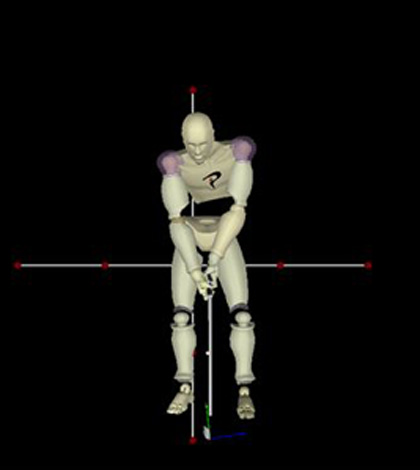
As we all know, putting requires a solid stroke that is derived from very coordinated motions of the shoulders, arms and hands, not to mention the complex set of psychomotor motions that must be mastered between the body and brain in order to be consistent. If you have control of this “powerful package” formed by your shoulders and arms, then you will be able to control your putting stroke.
In this article, I examine the most common problems that excessive flexion and extension of the lead and trailing elbows cause during a golfer’s stroke and how to fix them.
Within my putting academy I use several high tech tools in order to study the effects of the putting stroke. In this article I will feature two of my systems:
- Advanced Motion Measurement’s 3D Motion Analysis System
- The SAM Puttlab created by Science & Motion Sports
The Most Common Putting Problems
Within my putting research I feel I have identified the six most common issues within a golfer’s putting stroke that stem from the improper flexion and extension of the elbows. These issues can happen at any point during the stroke, and will negatively influence a gofler’s actions on the greens if left untamed. We used 3D Motion Analysis Testing with golfers of differing handicap levels in order to identify the following flaws, which are listed in order from address to follow-through.
- Elbows at the address position
- Flexion values for lead and trailing elbows at the address position
- Lead and trailing elbow extension during the address position
- Elbow separation on the backswing
- Rear-elbow flexion on backswing
- Lead-elbow flexion through impact and its influence on the lead wrist
- The “pulling in” of the elbows during the finish
Elbows at the address position
If you assume your normal address position with your putter and look down, you will see that your elbows hang a certain distance apart; however, what happens if you push your elbows together or move them outward? Is there a correct position?
The graphic above shows a right-handed golfer whose elbows are separated by 12 inches. The “pockets” on the inside of each elbow are not quite facing the sky, but they are close. This is the most relaxed, but controllable position golfers can have within their putting setup. They have “locked in” the framework, but have not created any adverse tension or unnatural positions with their elbows in the process.
What happens when the elbow separation becomes too narrow? Whenever golfers press their arms close together, tension is created. The tension is mostly felt where the inside of the upper arms meet the side of the chest. As we all know, tension in the putting stroke is a bad thing and it will not take long to permeate throughout the whole body, making a smooth stroke almost impossible. If the elbows start to creep too close, inside the 8-to10-inch mark (depending on your frame size), I can almost guarantee that they will have unwanted tension in their putting stroke.
Think back to Jack Nicklaus’ putting setup. What do you remember? Nicklaus had wide elbows and a very steady head! This is a fine position for the type of “push” putter Nicklaus was, where the rear forearm “pushed” or powered the stroke while the lead arm went along for the ride. But most people do not do this when placed in this position. If your elbows move 13-to-15 or more inches apart, most golfers will find that maintaining proper posture becomes very hard unless their putter is quite long. Whenever I see someone whose elbows are this far apart, I usually see poor posture as well from the down-the-line view. Whenever golfers crouch over the ball, they tend to “stand-up” through impact and leave the ball out to the right of your target. It also can be very uncomfortable to set up in this manner with a standard length putter, which leads to: “OW! My back.”
In the graphic above, the golfer has placed his rear forearm and the lead forearm in different flexes, which causes shoulder alignment issues. The rear forearm is flexed at 162.5 degrees (with 180 degrees being straight) and the leading forearm is flexed slightly more at 154.2 degrees. This places one shoulder out of line with the other, but more on that later in the article.
In a perfect world, I would like to see a golfer’s forearms flexed the same amount so that his or her shoulders, hips, knees, feet and the ball’s targetline are all parallel to one another. This creates, what Dave Pelz calls “perfect flowlines.”
A note for the average golfer
Most golfers align their shoulders to the left of their intended target line due to the improper flexing of the forearms. Thus, if I had to pick one error I’d like to eliminate within the set-up position I’d like to see the trailing forearm flexed slightly more than the lead forearm (remember, more flexed means closer to 90 degrees), or dropped closer to the hip. This accomplishes two things:
- It keeps the shoulders square to the target line at address, not open, as most players tend to place them.
- It also helps the rear forearm and the club shaft stay merged within in the same plane.
Drill: Whenever the rear forearm is flexed correctly, a line drawn up the club shaft will bisect the forearm directly. Look for this in your mirror at home.
Lead and trailing elbow extension during the address position
I touched on this aspect of the address position above, but I would like to go into deeper detail in order to show you the correlations between the leading and trailing elbow flex and its effect on the position of the shoulders.
Photo 1
Photo 2
Photo 1 shows a trailing forearm that is flexed at 162.5 degrees (too straight), and shoulders that are opened two degrees. This goes to show you that as your rear elbow flex diminishes, the shoulders will open. However, if your lead forearm is too straight, then the shoulders will likely be too closed.
There are two ways to eliminate this from creeping into your putting stroke.
- Use a mirror and audit your down-the-line position.
- Have a friend place a club shaft along your forearms at your address position. If it is parallel to your ball’s target line then you are fine. If not, you will know which forearm is not flexed enough.
Elbow separation on the backswing
Another interesting flaw that I’ve seen develop during testing (mostly with average golfers) was those golfers’ tendency to “widen” or “spread” their elbows farther apart as the club moved from address to the top position. Biomechanically, that move keeps the putter head from rotating open on the way back, and tends to push the putter on a more straight-back-and-straight-through path.
I really don’t know why it happens (I will need to do extra testing in order to answer this question), but my conjecture is that these players internally believe that they must move the putter straight back and straight through on a straight line and not an arc.
NOTE: If you could naturally move the putter straight back and straight through with zero face rotation, it would be a much easier way to putt. But our testing has shown that the body’s anatomical design always tries to put “some” arc in the stroke unless you physically stop it from doing so by making a physical manipulation (i.e. widening your elbows on the backstroke).
Rear-elbow flexion on backswing
Another interesting development in the very novice golfer was the over-flexion of the rear elbow during the backstroke. Imagine setting up to hit a putt, and the first move you make is to flex (moving toward 90 degrees) your rear elbow in order to power the putter shaft on the backswing.
This causes two things to happen. One, it allows your putter to leave the ground too rapidly, and two, it causes your angle of attack on the forward swing to be too steep. This action de-lofts the putter at impact too much, and unless you adjust your putter’s loft accordingly, you will actually drive the ball into the ground. That causes the ball to bounce before it rolls.
In the image above, you can see on the left how the backswing line is very “up” and the right side of the graph (in red) shows the putter face being de-lofted 2.4 degrees. Now assume that you have a standard putter with 4 degrees of loft and you deloft it 2.4 degrees:
4 – 2.4 = 1.6 degrees of dynamic loft.
Couple this with the fact that your putter is chopping down on the ball (moving 2.4 degrees downward at impact), and you have the keys to making the ball skid and bounce off the start of its roll! In order to stop this problem from happening, simply keep the putter head closer to the ground during the backswing and that should take care of most of it.
Lead elbow flexion through impact and its influence on the lead wrist
As the putter moves through impact, several things are happening at once: the putter path is flattening out, the putter is hopefully moving at a constant rate of acceleration and the face is beginning to rotate back to square (90 degrees to your arc). It is here that the ball’s initial starting direction and velocity are programmed. If you have issues here, you will surely fail.
Notice the lead elbow’s flex above, 134.6 degrees, which means it has a lot of flex in it on the way through impact. Now, notice the lead wrist’s position (it is 33.1 degrees extended, or cupped). This shows you that as the lead elbow flexes more through impact, the lead wrist begins to breakdown and this adds loft to the putter and interrupts the natural closing rate of your putter head, which leaves putts out to the right. This impact alignment breakdown is the major flaw for all golfers today, from PGA Tour players down to the weekend hacker.
In a perfect world, the above example is how your impact alignments should look — the lead elbow is very extended and the lead wrist is in a very neutral position. If you “breakdown” the lead elbow’s flex, the lead wrist will follow suit and you will add loft to your putter as shown by the graphic below.
4-degree putter + 3 degrees of added loft = a 7-degree putter
That’s basically a chipper!
The “pulling in” of the elbows during the finish
By now, we have all seen the golfer who “pulls his arms into his body just after impact,” which would be like impacting the golf ball and then trying to stick the butt of the club into your belly-button as quickly as possible. Obviously, this impedes the level of accuracy golfers are going for on the putting green, but thankfully it only afflicts novice golfers and is a flaw that is easily overcome.
Just after impact, golfers should feel the putter head staying reasonably low to the ground (don’t force it!) as in the graphic below. This allows the putter head to naturally release back to square at impact and it keeps the putter head’s rate of rotation through impact constant. You can see how the leading elbow flex is 150.1, which is very close to 180 (perfectly straight), and this does not allow the lead wrist to breakdown too rapidly during the process. This is the motion necessary to control the closing rate of your putter face through impact.
When these positive motions occur through impact, it keeps the rate of rotation very constant through the ball, as shown in the bottom right graph above. Notice how close the lines are to being on top of one another. Thats means that each individual stroke that was measured had virtually the same rate and amount of rotation through impact!
Instruction
The Wedge Guy: Beating the yips into submission

There may be no more painful affliction in golf than the “yips” – those uncontrollable and maddening little nervous twitches that prevent you from making a decent stroke on short putts. If you’ve never had them, consider yourself very fortunate (or possibly just very young). But I can assure you that when your most treacherous and feared golf shot is not the 195 yard approach over water with a quartering headwind…not the extra tight fairway with water left and sand right…not the soft bunker shot to a downhill pin with water on the other side…No, when your most feared shot is the remaining 2- 4-foot putt after hitting a great approach, recovery or lag putt, it makes the game almost painful.
And I’ve been fighting the yips (again) for a while now. It’s a recurring nightmare that has haunted me most of my adult life. I even had the yips when I was in my 20s, but I’ve beat them into submission off and on most of my adult life. But just recently, that nasty virus came to life once again. My lag putting has been very good, but when I get over one of those “you should make this” length putts, the entire nervous system seems to go haywire. I make great practice strokes, and then the most pitiful short-stroke or jab at the ball you can imagine. Sheesh.
But I’m a traditionalist, and do not look toward the long putter, belly putter, cross-hand, claw or other variation as the solution. My approach is to beat those damn yips into submission some other way. Here’s what I’m doing that is working pretty well, and I offer it to all of you who might have a similar affliction on the greens.
When you are over a short putt, forget the practice strokes…you want your natural eye-hand coordination to be unhindered by mechanics. Address your putt and take a good look at the hole, and back to the putter to ensure good alignment. Lighten your right hand grip on the putter and make sure that only the fingertips are in contact with the grip, to prevent you from getting to tight.
Then, take a long, long look at the hole to fill your entire mind and senses with the target. When you bring your head/eyes back to the ball, try to make a smooth, immediate move right into your backstroke — not even a second pause — and then let your hands and putter track right back together right back to where you were looking — the HOLE! Seeing the putter make contact with the ball, preferably even the forward edge of the ball – the side near the hole.
For me, this is working, but I am asking all of you to chime in with your own “home remedies” for the most aggravating and senseless of all golf maladies. It never hurts to have more to fall back on!
Instruction
Looking for a good golf instructor? Use this checklist

Over the last couple of decades, golf has become much more science-based. We measure swing speed, smash factor, angle of attack, strokes gained, and many other metrics that can really help golfers improve. But I often wonder if the advancement of golf’s “hard” sciences comes at the expense of the “soft” sciences.
Take, for example, golf instruction. Good golf instruction requires understanding swing mechanics and ball flight. But let’s take that as a given for PGA instructors. The other factors that make an instructor effective can be evaluated by social science, rather than launch monitors.
If you are a recreational golfer looking for a golf instructor, here are my top three points to consider.
1. Cultural mindset
What is “cultural mindset? To social scientists, it means whether a culture of genius or a culture of learning exists. In a golf instruction context, that may mean whether the teacher communicates a message that golf ability is something innate (you either have it or you don’t), or whether golf ability is something that can be learned. You want the latter!
It may sound obvious to suggest that you find a golf instructor who thinks you can improve, but my research suggests that it isn’t a given. In a large sample study of golf instructors, I found that when it came to recreational golfers, there was a wide range of belief systems. Some instructors strongly believed recreational golfers could improve through lessons. while others strongly believed they could not. And those beliefs manifested in the instructor’s feedback given to a student and the culture created for players.
2. Coping and self-modeling can beat role-modeling
Swing analysis technology is often preloaded with swings of PGA and LPGA Tour players. The swings of elite players are intended to be used for comparative purposes with golfers taking lessons. What social science tells us is that for novice and non-expert golfers, comparing swings to tour professionals can have the opposite effect of that intended. If you fit into the novice or non-expert category of golfer, you will learn more and be more motivated to change if you see yourself making a ‘better’ swing (self-modeling) or seeing your swing compared to a similar other (a coping model). Stay away from instructors who want to compare your swing with that of a tour player.
3. Learning theory basics
It is not a sexy selling point, but learning is a process, and that process is incremental – particularly for recreational adult players. Social science helps us understand this element of golf instruction. A good instructor will take learning slowly. He or she will give you just about enough information that challenges you, but is still manageable. The artful instructor will take time to decide what that one or two learning points are before jumping in to make full-scale swing changes. If the instructor moves too fast, you will probably leave the lesson with an arm’s length of swing thoughts and not really know which to focus on.
As an instructor, I develop a priority list of changes I want to make in a player’s technique. We then patiently and gradually work through that list. Beware of instructors who give you more than you can chew.
So if you are in the market for golf instruction, I encourage you to look beyond the X’s and O’s to find the right match!
Instruction
What Lottie Woad’s stunning debut win teaches every golfer

Most pros take months, even years, to win their first tournament. Lottie Woad needed exactly four days.
The 21-year-old from Surrey shot 21-under 267 at Dundonald Links to win the ISPS Handa Women’s Scottish Open by three shots — in her very first event as a professional. She’s only the third player in LPGA history to accomplish this feat, joining Rose Zhang (2023) and Beverly Hanson (1951).
But here’s what caught my attention as a coach: Woad didn’t win through miraculous putting or bombing 300-yard drives. She won through relentless precision and unshakeable composure. After watching her performance unfold, I’m convinced every golfer — from weekend warriors to scratch players — can steal pages from her playbook.
Precision Beats Power (And It’s Not Even Close)
Forget the driving contests. Woad proved that finding greens matters more than finding distance.
What Woad did:
• Hit it straight, hit it solid, give yourself chances
• Aimed for the fat parts of greens instead of chasing pins
• Let her putting do the talking after hitting safe targets
• As she said, “Everyone was chasing me today, and managed to maintain the lead and played really nicely down the stretch and hit a lot of good shots”
Why most golfers mess this up:
• They see a pin tucked behind a bunker and grab one more club to “go right at it”
• Distance becomes more important than accuracy
• They try to be heroic instead of smart
ACTION ITEM: For your next 10 rounds, aim for the center of every green regardless of pin position. Track your greens in regulation and watch your scores drop before your swing changes.
The Putter That Stayed Cool Under Fire
Woad started the final round two shots clear and immediately applied pressure with birdies at the 2nd and 3rd holes. When South Korea’s Hyo Joo Kim mounted a charge and reached 20-under with a birdie at the 14th, Woad didn’t panic.
How she responded to pressure:
• Fired back with consecutive birdies at the 13th and 14th
• Watched Kim stumble with back-to-back bogeys
• Capped it with her fifth birdie of the day at the par-5 18th
• Stayed patient when others pressed, pressed when others cracked
What amateurs do wrong:
• Get conservative when they should be aggressive
• Try to force magic when steady play would win
• Panic when someone else makes a move
ACTION ITEM: Practice your 3-6 foot putts for 15 minutes after every range session. Woad’s putting wasn’t spectacular—it was reliable. Make the putts you should make.
Course Management 101: Play Your Game, Not the Course’s Game
Woad admitted she couldn’t see many scoreboards during the final round, but it didn’t matter. She stuck to her game plan regardless of what others were doing.
Her mental approach:
• Focused on her process, not the competition
• Drew on past pressure situations (Augusta National Women’s Amateur win)
• As she said, “That was the biggest tournament I played in at the time and was kind of my big win. So definitely felt the pressure of it more there, and I felt like all those experiences helped me with this”
Her physical execution:
• 270-yard drives (nothing flashy)
• Methodical iron play
• Steady putting
• Everything effective, nothing spectacular
ACTION ITEM: Create a yardage book for your home course. Know your distances to every pin, every hazard, every landing area. Stick to your plan no matter what your playing partners are doing.
Mental Toughness Isn’t Born, It’s Built
The most impressive part of Woad’s win? She genuinely didn’t expect it: “I definitely wasn’t expecting to win my first event as a pro, but I knew I was playing well, and I was hoping to contend.”
Her winning mindset:
• Didn’t put winning pressure on herself
• Focused on playing well and contending
• Made winning a byproduct of a good process
• Built confidence through recent experiences:
- Won the Women’s Irish Open as an amateur
- Missed a playoff by one shot at the Evian Championship
- Each experience prepared her for the next
What this means for you:
• Stop trying to shoot career rounds every time you tee up
• Focus on executing your pre-shot routine
• Commit to every shot
• Stay present in the moment
ACTION ITEM: Before each round, set process goals instead of score goals. Example: “I will take three practice swings before every shot” or “I will pick a specific target for every shot.” Let your score be the result, not the focus.
The Real Lesson
Woad collected $300,000 for her first professional victory, but the real prize was proving that fundamentals still work at golf’s highest level. She didn’t reinvent the game — she simply executed the basics better than everyone else that week.
The fundamentals that won:
• Hit more fairways
• Find more greens
• Make the putts you should make
• Stay patient under pressure
That’s something every golfer can do, regardless of handicap. Lottie Woad just showed us it’s still the winning formula.
FINAL ACTION ITEM: Pick one of the four action items above and commit to it for the next month. Master one fundamental before moving to the next. That’s how champions are built.
PGA Professional Brendon Elliott is an award-winning coach and golf writer. You can check out his writing work and learn more about him by visiting BEAGOLFER.golf and OneMoreRollGolf.com. Also, check out “The Starter” on RG.org each Monday.
Editor’s note: Brendon shares his nearly 30 years of experience in the game with GolfWRX readers through his ongoing tip series. He looks forward to providing valuable insights and advice to help golfers improve their game. Stay tuned for more Tips!


















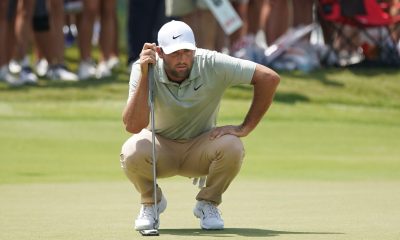

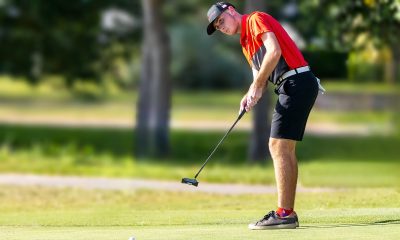



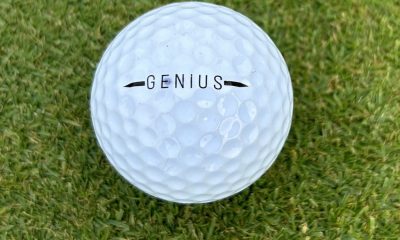



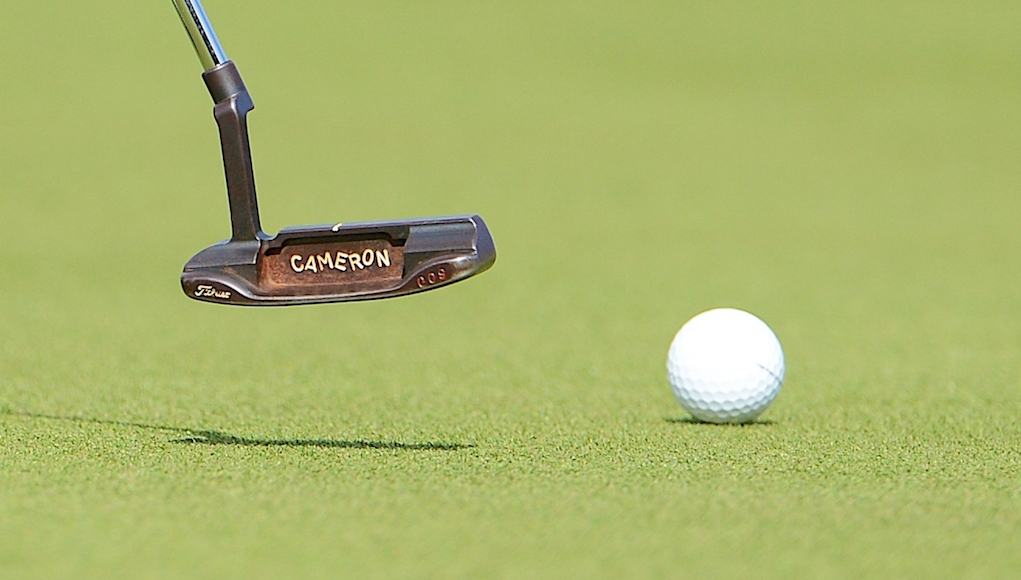








Jason
Apr 7, 2014 at 3:43 am
My shoulders are aligned left of target line at address as you mentioned. Can you better explain to me how to “flex my trailing forearm more?”
And I’m having a hard time visualizing what “closer to 90 degrees” looks like.
Deep Putts
Aug 17, 2019 at 12:59 am
Pull your hand toward your shoulder, this is closer to 90, i.e. curled. Push your hand away from your shoulder, i.e. straightened, this is further from 90.
adan
Oct 23, 2013 at 11:26 am
Like I don’t have enough to worry about in my putting, now my forearms are too close?? lol I forward press with my putter, how can I apply this? So do you advocate 7 degree putters?
d
Oct 22, 2013 at 10:04 am
Great research.
Do your findings/recommendations change for putting left hand low (for right handed golfer)?
Tom Stickney
Oct 22, 2013 at 12:25 pm
Left hand low seems to work better for most players whom tend to have excessive hand action while putting.